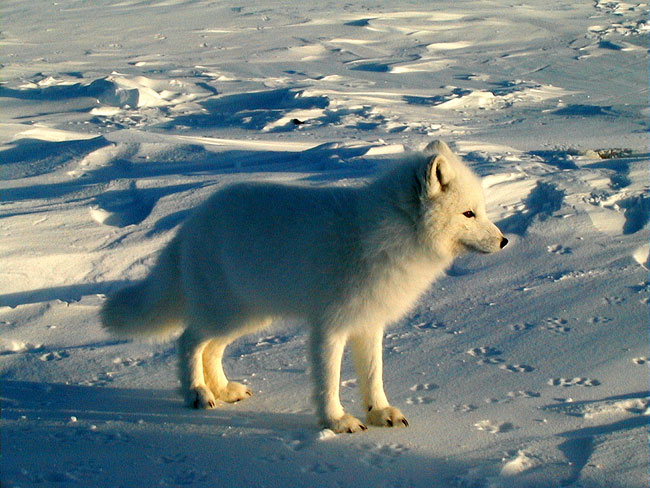Frisky Foxes Not So Faithful

Some foxes are friskier than scientists once thought.
Until recently, wildlife biologists considered foxes, wolves and coyotes to be monogamous, a strategy presumed to give offspring a better chance of surviving, since monogamy meant that females have the helping hand of a male in raising newborns to adulthood.
But a new study of Arctic foxes, detailed in the Canadian Journal of Zoology, finds that some do sleep around.
"The generalization that mating couples stuck together usually came from field observations," said researcher Lindsey Carmichael of the University of Alberta in Edmonton. "People would often see pairs of foxes together and so they would just assume that was their standard mating pattern."
Carmichael and her colleagues made thier finding by examining genetic samples from 49 Arctic foxes trapped in dens on Bylot Island, Nunavut.
In three-quarters of the dens, fox cubs were the offspring of a single male and female. But in a quarter of the cases, the Arctic foxes proved to be less exclusive, with one litter providing the first genetic evidence of polyandry (females having multiple male mates at one time).
The researchers suggest various reasons for being not-so-monogamous. “Having offspring from multiple fathers allows a female to increase the genetic variation in her cubs,” Carmichael explained. “This increase in variation improves the chances that at least one cub in a litter will have the right stuff genetically to survive long term in such a harsh and changing environment."
Sign up for the Live Science daily newsletter now
Get the world’s most fascinating discoveries delivered straight to your inbox.
Also, "two males bringing food to her cubs," Carmicheal added, "is much more advantageous for her offspring than just one."
- Mating Game: The Really Wild Kingdom
- Wild Sex: Where Monogamy is Rare
- Vote: Monogamous Animals: It's Not What You Think









